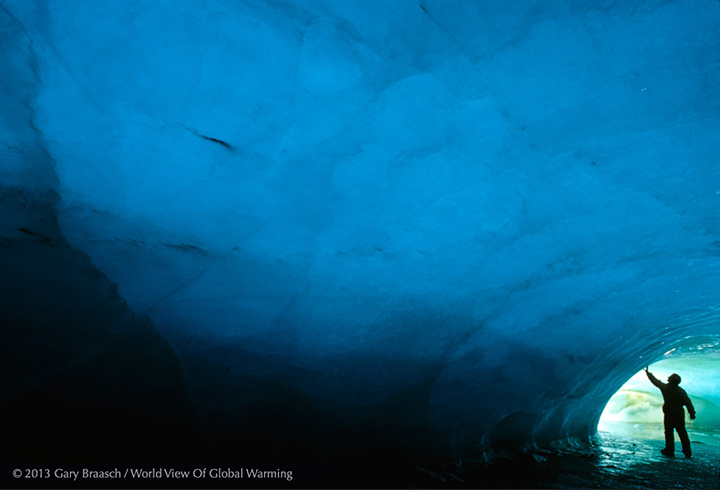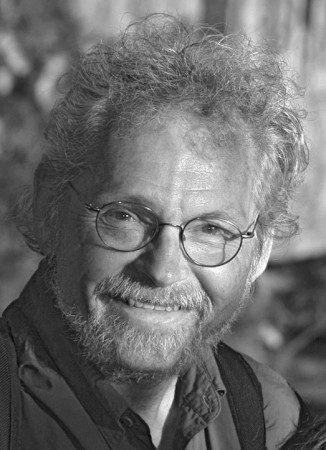A solitary figure confronts the ice in Gary Braasch’s iconic photograph. The ice towers over the human, but the human controls the ice’s fate as never before. Humans now pump enough carbon dioxide into the air to raise atmospheric concentrations to the highest levels in 850,000 years, blanketing earth with heat-trapping (“greenhouse”) gases and melting most glaciers at breathtaking speed.
The photograph, like the moment, invites us to reflect. How will we respond to glacial retreat, a harbinger of more ominous impacts to come? With indifference? Uncertainty? Fear? Or with confidence, creativity and resolve? Will we summon courage to ask: are our decisions honoring the future of our children and theirs?

Gary Braasch, Ice Cave, Antarctica (2000) Photograph. A remnant of Marr Ice Piedmont stranded near Palmer Station U.S. science base. ©2013 Gary Braasch/ World View of Global Warming. Courtesy of the artist.
Artist’s Statement:
I am an environmental photojournalist. About 15 years ago, I became interested in climate change because I learned how it was already affecting my nature subjects. I began a photographic project, “World View of Global Warming,” for which I’ve traveled to 28 nations and seven continents, photographing scientists studying climate change and impacts they were observing. As a witness to climate change, I have stood in the empty rookeries of displaced Adélie penguins; seen the jagged fronts of receding Greenland glaciers; observed changes on the tundra; and photographed parched farms and reservoirs. I have tracked down 100-year-old images of Alpine glaciers and rephotographed them to show them wasting away. In the woods of eastern North America I have watched migrant songbirds, arriving earlier each spring than in decades past. Along the coasts I have seen rising tides and heavy storms erode beaches. I have heard the anguish in the voices of native Alaskans describing their village being washed away, of Chinese farmers facing famine caused by drought, and of Pacific Islanders driven from their homes by increasingly high tides. Climate change is affecting the whole world, from the tiniest ocean plankton to entire river basins and mountain ranges – and urban people in their cities and homes.
Artist’s Website: www.braaschphotography.com
Project website: www.worldviewofglobalwarming.org

